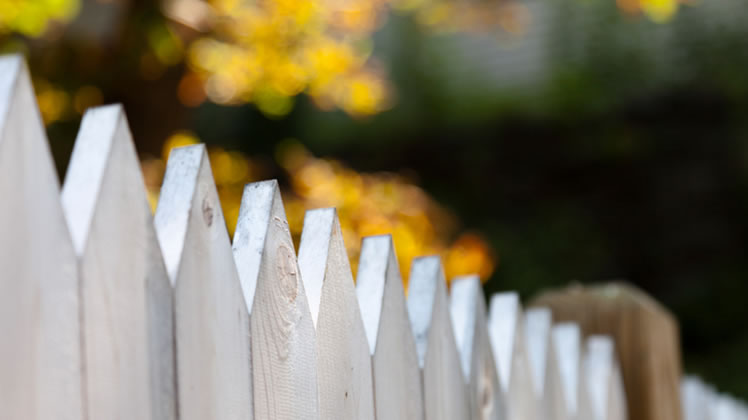What's the best fence for your property?

Privacy, security, beautification – there are plenty of reasons why you might choose to fence your property. Understand what your options are and how to choose the right fence.
Why fence?
You might want to keep your dog, or kids, securely inside. Or maybe you want to keep others out. Fencing can conceal a less-than-attractive streetscape. It can also be vital when you want to maintain a friendly distance from your neighbours. If you’re selling or renting out your property, you might simply want to boost your property’s ‘kerb appeal’ – the first impression your house gives to the outside world.
Once you’re clear on exactly what you want to achieve with your new fence, choosing the style and materials will be that much easier.
Securing your property
When you want to send a strong security message and keep strangers out, you’ll want a high, solid fence with a sturdy, lockable gate. You may want to add a section of trellis to the top if you want to soften the imposing look. For even more security, choose a fence with flush boards and no horizontal rails on the outside, to make it difficult to climb.
Keep in mind that many local councils have rules that include specifications about fencing heights and materials.
Fencing with style
If your fence is to keep pets or children in while boosting your property’s kerb appeal, the classic picket fence is an elegant choice for the front of your property. Wooden or PVC ‘faux wood’ in white or a natural stain can enhance your landscaping and give your house a homey, traditional look.
When you want something edgier and you’re prepared to spend a bit more, there are some stylish options out there, especially with wooden fences. Today’s style is all about horizontal boards, and going beyond basic pine, recycled hardwood can add a fancy touch. To get privacy without creating a fenced-in look, spaced horizontal boards retain a sense of privacy while allowing room to let light in and train climbing plants around.
Shared dividing fences
As the old saying goes, good fences make good neighbours. And while disputes over shared fences are fairly common, most of the time a simple treated-pine paling fence does the job and keeps everyone happy. If you want something special from a shared fence, keep in mind that your neighbour has to live with it as well. Discuss plans (and costs) up-front, and always get multiple quotes for fencing work.
Choosing your fencing material
Wood (especially treated and cypress pine), PVC, steel, aluminium and cyclone wire are among the most common fencing materials used in Australia.
Wood offers lots of decorative options, but it has a limited lifespan and you’ll need to be prepared for some upkeep. Treatment with a moisture sealant can help prevent warping and rot, and staining will extend the fence’s longevity as well as enhance its looks – but remember, you’ll need to reapply it every three to five years.
PVC (vinyl) fences last practically forever – if you’re planning to paint a wooden fence, consider a wood-look PVC fence instead.
Metal fencing is sturdy, and some styles can complement the style of your home; for example, many modern ‘Georgian’ homes look great with a metal bar fence. The classic wrought-iron fence can be both a decorative feature and a security solution, while aluminium or steel tubes are a low-maintenance, rust-resistant alternative.
Chain-link fences are affordable and long-lasting but, even with a colour-coated finish, they can struggle in the looks stakes. On the other hand, garden-proud home owners sometimes choose chain-link fencing to show off their plants and flowers. If you need a no-frills option, try disguising a chain-link fence with hedging.
Council regulations and disputes
Before making any decisions about fencing, take a look at your local council’s website, or give them a call, to see what regulations are in place. They’ll probably have guidelines on materials, height, distance from permanent structures, what side of a fence the posts and railings go on and more.
Your local and state governments will also have information on how to resolve a fencing dispute, although hopefully you won’t need to use it.
An old, unstable or unattractive fence can be an immediate turn-off. Once you’ve decided what you want to achieve and how much work you want to put in, you’re well on your way to choosing the best type of fencing for your home.





